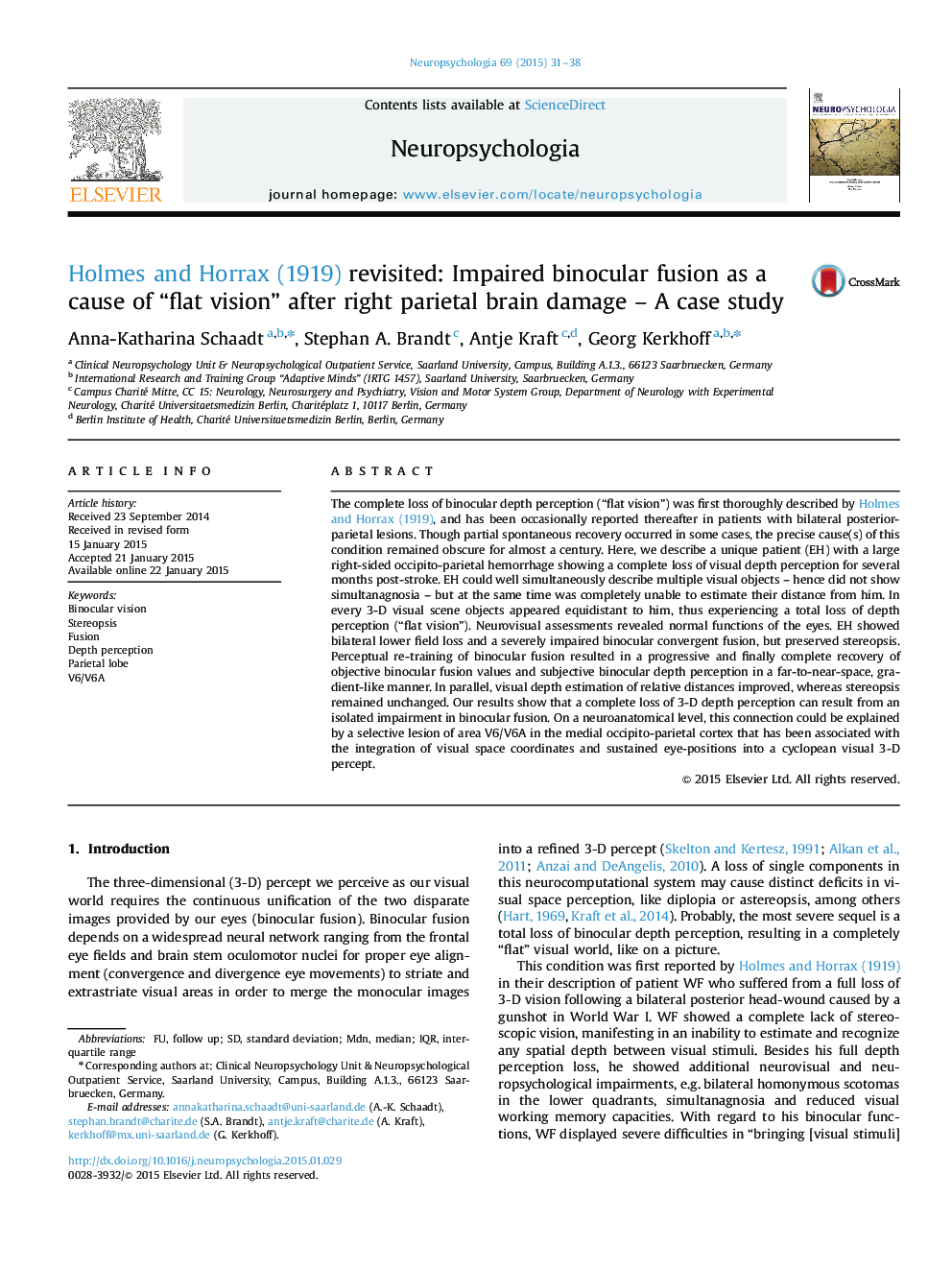| Article ID | Journal | Published Year | Pages | File Type |
|---|---|---|---|---|
| 7320316 | Neuropsychologia | 2015 | 8 Pages |
Abstract
The complete loss of binocular depth perception (“flat vision”) was first thoroughly described by Holmes and Horrax (1919), and has been occasionally reported thereafter in patients with bilateral posterior-parietal lesions. Though partial spontaneous recovery occurred in some cases, the precise cause(s) of this condition remained obscure for almost a century. Here, we describe a unique patient (EH) with a large right-sided occipito-parietal hemorrhage showing a complete loss of visual depth perception for several months post-stroke. EH could well simultaneously describe multiple visual objects - hence did not show simultanagnosia - but at the same time was completely unable to estimate their distance from him. In every 3-D visual scene objects appeared equidistant to him, thus experiencing a total loss of depth perception (“flat vision”). Neurovisual assessments revealed normal functions of the eyes. EH showed bilateral lower field loss and a severely impaired binocular convergent fusion, but preserved stereopsis. Perceptual re-training of binocular fusion resulted in a progressive and finally complete recovery of objective binocular fusion values and subjective binocular depth perception in a far-to-near-space, gradient-like manner. In parallel, visual depth estimation of relative distances improved, whereas stereopsis remained unchanged. Our results show that a complete loss of 3-D depth perception can result from an isolated impairment in binocular fusion. On a neuroanatomical level, this connection could be explained by a selective lesion of area V6/V6A in the medial occipito-parietal cortex that has been associated with the integration of visual space coordinates and sustained eye-positions into a cyclopean visual 3-D percept.
Keywords
Related Topics
Life Sciences
Neuroscience
Behavioral Neuroscience
Authors
Anna-Katharina Schaadt, Stephan A. Brandt, Antje Kraft, Georg Kerkhoff,
